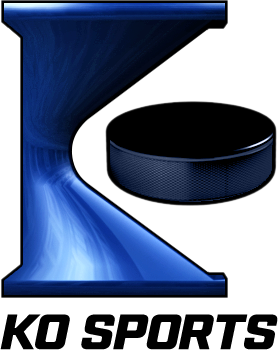JT Compher Ranks in the Top Five Defensive Centers in the NHL
DENVER, CO – Offense reigns supreme in the modern NHL.
Speed and skill are at an all-time high, defensemen are more active offensively, power-play scoring rates have boomed, enhanced stick technology has bolstered the shooting ability of players and referees are calling the rulebook tighter than ever before.
It’s never been harder to defend, which makes high-end shutdown players uniquely valuable. We’ve analyzed some of hockey’s top shutdown defensemen before but who are the league’s best defensive centers?
We can explore this topic by digging into some data. In fact, we need a combination of numbers to filter through the league and find our gems. Why? Well, we can’t solely rely on something like goals against, for example, because it’s too blunt of an instrument — it doesn’t account for the other four players that the center shares the ice with or goaltending quality. But it’s obviously still a really important measuring point, so the goal is to find a variety of metrics like this that can be useful and complement each other.
I started the exercise by using an initial filter for the following criteria since the 2020-21 season.
- Plays an average of at least 15 minutes per game
- Five-on-five goals-against rate below the league average for forwards of 2.53 (Preventing goals is the ultimate goal of defense. Goals against can, however, be quite volatile and influenced by luck — some centers prevent shots and scoring chances very well but get punished because their goaltender can’t make a save — so I didn’t want this filter to be too harsh.)
- Matchups around league-average quality or tougher (If you’re a top defensive center you shouldn’t be playing sheltered minutes. I used HockeyViz and PuckIQ’s quality of competition data to measure this)
- Must kill penalties, even if it’s just on a part-time basis (If you don’t ever kill penalties, are you really an elite defensive player?)
After running this filter, we get a refined pool of centers over the last three seasons who play top-nine minutes, are trusted enough to defend top forwards on a regular basis, prevent goals against better than league-average and kill penalties. From here, I decided to use Evolving-Hockey’s Regularized Adjusted Plus-Minus (RAPM) tool to measure defensive impact and rank our pool of centers.
This RAPM tool can identify the players who have the strongest impact on suppressing quality scoring chances through their expected goals model. Most importantly, this tool can level the playing field by giving us a player’s isolated defensive impact after accounting for variables such as teammate quality (who they share the ice with on shifts), opposition quality, zone starts (some players start in the defensive zone more often than others) and more.
There’s no such thing as a perfect all-in-one tool, and RAPM is no different, but in a world where objectively measuring defensive impact can be challenging, this stands out as a useful data point.
Before presenting the results, I want to quickly share a couple of disclaimers:
- We’re ignoring offense and only measuring pure defensive impact. That means if Center A is higher on this list than Center B, it doesn’t necessarily mean Center A is the better overall player.
- We will only be measuring five-on-five impact because it’s nearly impossible to objectively measure penalty-killing ability with publicly available data.
- This is, of course, only an analytical perspective. The numbers obviously can’t capture everything, especially for defense. Because of that, take this article’s findings as a conversation starter, or a list that’s identifying some of the top defensive centers rather than a definitive ranking. You should look at the initial list and then apply your own eye test, context and knowledge — it’s all about how you interpret the data. There will be plenty of quality shutdown centers that don’t land on this list or just missed the cut for one reason or another like Jean Gabriel Pageau and Elias Lindholm.
Without further ado, let’s dive in. The centers on this list will be presented in the order of their RAPM defensive impact.
3. J.T. Compher will be a surprising name to many but the closer you watch him, the more you appreciate the details of his game. The 27-year-old pending UFA is speedy and offers a nonstop motor which makes him very disruptive both on the forecheck and stealing pucks on the backcheck. Compher has been on the ice for fewer than 2.00 goals against per hour in four consecutive seasons. Typically that’s been in a third-line role, but Nazem Kadri’s departure has forced Compher into a more prominent role. He’s been successful navigating the higher minutes (averaging 20:23 per game) and tougher matchups (playing the most minutes against elite competition of any Avs forward besides Nathan MacKinnonaccording to PuckIQ), authoring a breakout performance where he’s not only maintained his excellent defensive numbers, but also chipped in with a career-high 50 points.



